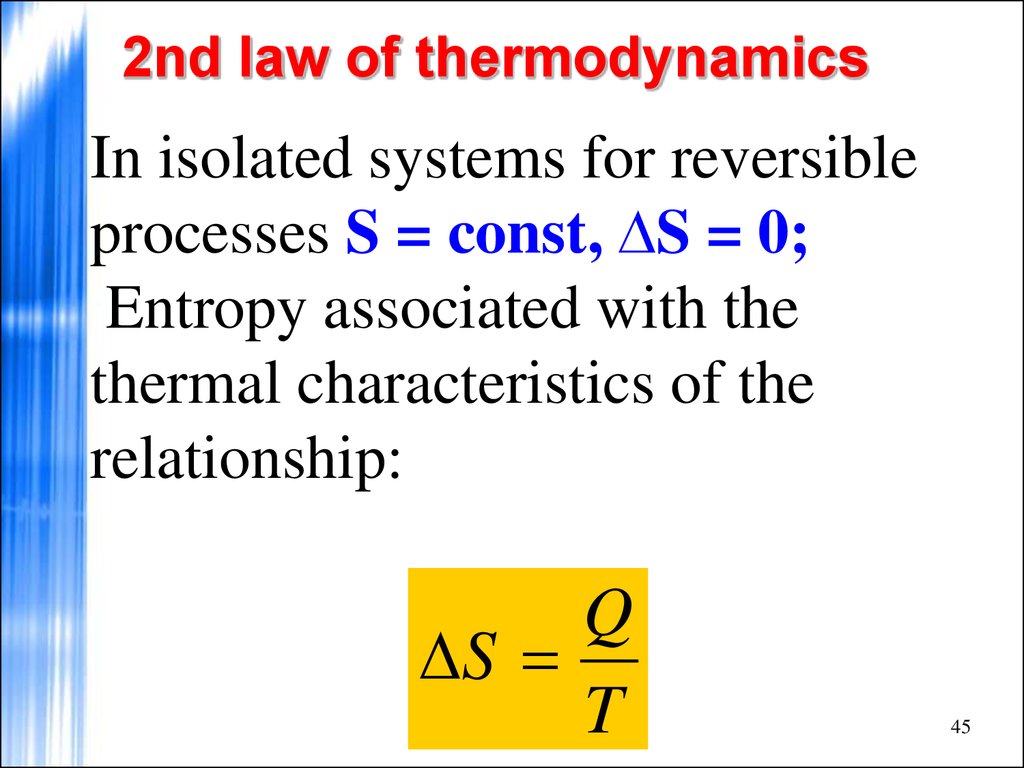
It doesn’t have much to do with the economy either, except very indirectly, because machines are useful and the second law prohibits certain kinds of machines.Ĭonfusingly, as we learned the Clausius version of the second law, we also discussed phenomena such as gas diffusion, shown in this animated gif: What did it have to do with evolution? The illusion that organisms are well-designed doesn’t have anything to do with heat being transferred. However, it is a far cry from the lofty fundamental principle I had expected to learn. The version of the second law I just described, usually attributed to the 19th century German physicist Rudolf Clausius, certainly has its uses.

When a cup of coffee cools down its entropy decreases, but the entropy of its surroundings increases by an even greater amount, since the coffee is hotter than the surroundings. In other words, the total entropy must either increase or stay the same. The second law of thermodynamics can then be stated as, if you add up all of the changes in entropy of all the objects you are studying, the result must be a positive number or zero. When that same heat energy flows into another object, that object’s entropy goes up by Q divided by the temperature of the second object, T 2. The change in the entropy is the amount of heat energy transferred, Q (usually measured in joules), divided by the temperature of the object, T 1, measured in Kelvin. When heat flows out of one object and into another, the first object’s entropy goes down, by an amount that depends on its temperature. The second law is formalised by defining a quantity called entropy. Your morning cup of coffee cools down, and heats up the air around it it doesn’t heat up further while cooling the room, even though that possibility is compatible with other laws of physics such as the conservation of energy. A familiar consequence of this version of the second law is that heat always flows from a hot object to a cooler one, and not the other way around. The version of the second law we studied was related to concepts of heat and temperature, and little else. I’m sure these are interesting in their own ways, but I was disappointed. Instead of discussing big-picture issues like evolution, economics, or cosmology, we worked out the maximum possible efficiency of refrigerators and steam engines. Alas, my expectations were not met, despite having a good lecturer. Finally, I thought, I would be able to understand the second law properly (along with the other, less popular laws). 3 At the time, I thought it was unlikely that mainstream biology would flagrantly contradict mainstream physics, so I remained sceptical of this argument, even though I couldn’t understand the counterarguments I found on the Internet at the time.ĭuring my first university physics course, I was excited when I learned we’d be studying thermodynamics. At first glance, this does seem incompatible with evolution by natural selection, which can lead to more complex, “better designed” organisms over time.


Its definition of the second law was that disorder always increases with time. Since the article’s author wanted to argue against biological evolution, it claimed that the second law of thermodynamics implies evolution is impossible. I first encountered the second law as a teenager, while reading an issue of the fundamentalist Christian magazine Creation, given to me by my grandmother. 2 However, trying to find a clear explanation of what the second law actually is (and why it is true) can be a frustrating experience. The second law has even been invoked by rock band Muse to explain why, in their view, economic growth cannot continue for much longer. Some physicists think the second law is connected to fundamental ideas such as time and the origin of the universe, 1 yet it is also an aspect of everyday experiences, such as how a morning cup of coffee cools down, or the fact that you cannot unscramble an egg. Depending on who you ask, it is either incredibly mysterious or fairly mundane. The second law of thermodynamics surely qualifies as one of the most talked-about principles in all of physics.


 0 kommentar(er)
0 kommentar(er)
